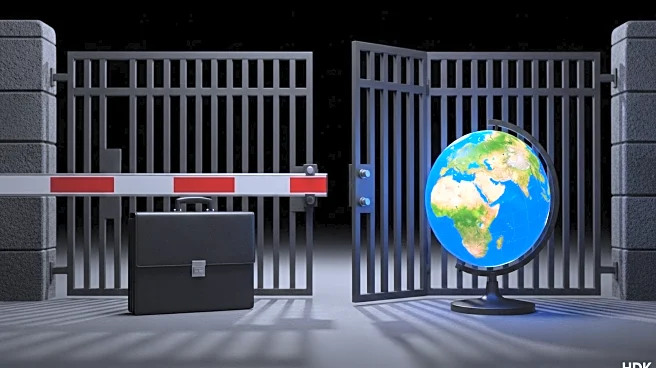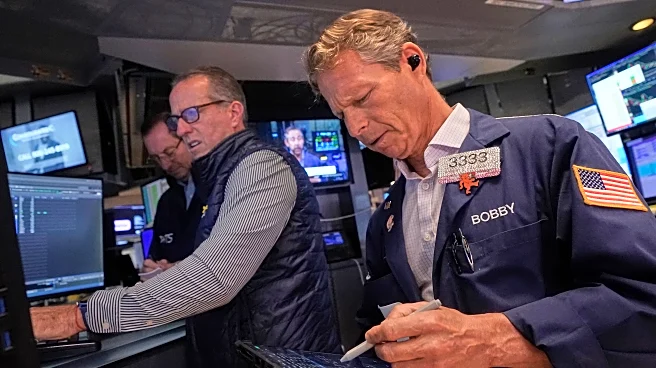What's Happening?
The U.S. footwear industry is experiencing a decline in demand due to tariff-induced price increases. According to Matt Priest, president of the Footwear Distributors and Retailers Association, companies have attempted to mitigate these costs by front-loading shipments, but the impact of tariffs is now unavoidable. The industry is facing a significant tariff burden, with costs expected to reach $5 billion by the end of the year. This has led to price increases for consumers, with brands passing on about 10% of the increases.
Why It's Important?
The tariff-induced price hikes are likely to affect consumer spending patterns, leading to decreased demand for footwear. This could have broader implications for the U.S. economy, particularly in the retail sector. As prices rise, consumers may prioritize essential goods over discretionary purchases like fashion footwear, impacting sales and potentially leading to job losses in the industry.
What's Next?
The U.S. Supreme Court's upcoming decision on President Trump's legal authority to enforce tariffs could alter the landscape. If refunds are issued, companies might use the capital to maintain or increase headcount, lower prices, or improve product quality. The industry will need to navigate these uncertainties while adapting to changing consumer behaviors.
Beyond the Headlines
The legal and economic dimensions of tariff policies could lead to long-term shifts in trade relations and industry practices. Companies may need to explore alternative sourcing strategies to mitigate risks associated with tariffs.












